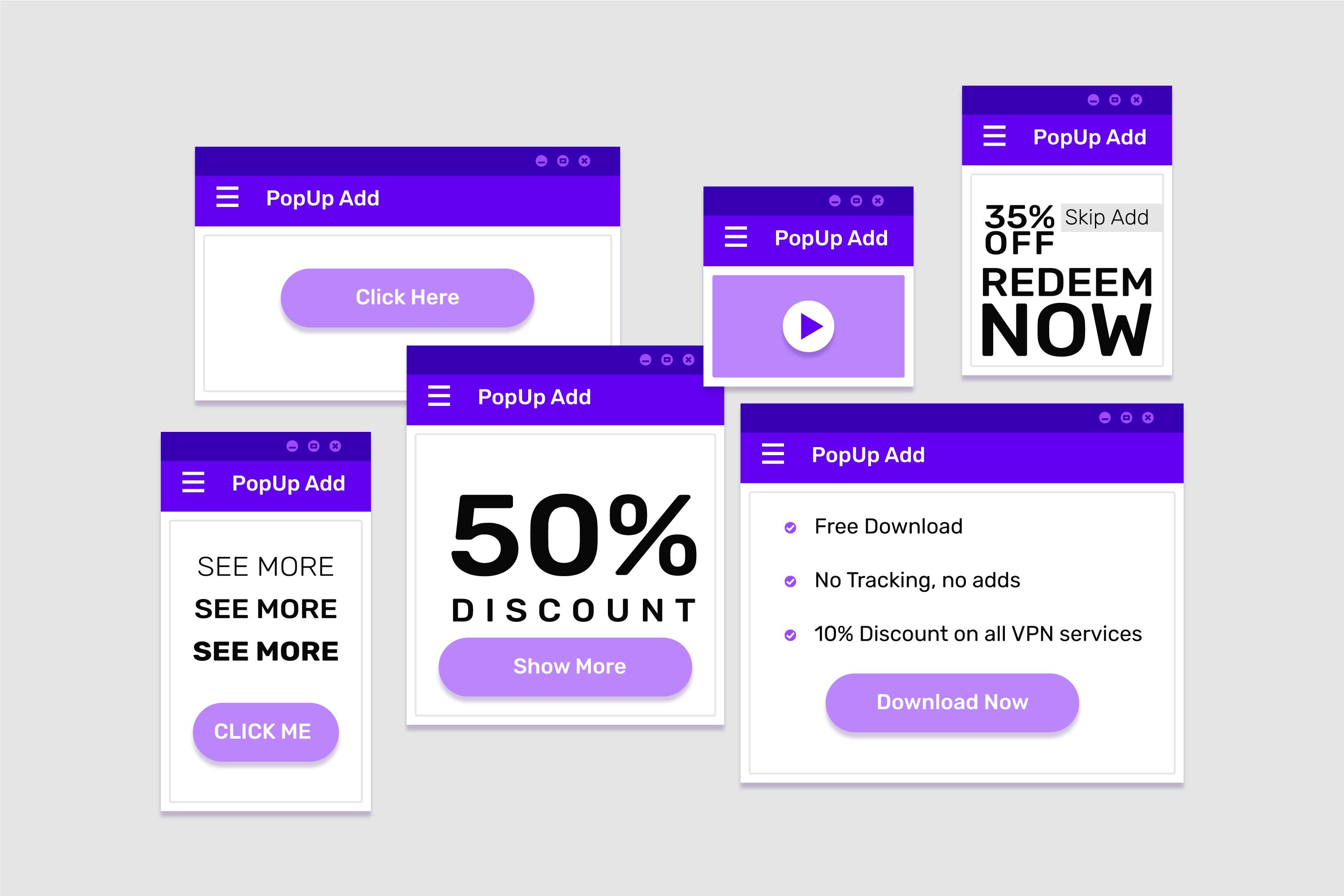eCommerce Pop-Ups: Its types, benefits and much more!
Dear Esteemed Readers,
Welcome to the latest edition of "Future Mortals," your go-to destination for all things related to cutting-edge marketing & branding strategies and trends. In an era where the Business landscape is constantly evolving, we are thrilled to embark on this journey of knowledge-sharing and innovation with you.
Pop-ups have been getting a bad rep lately due to the intrusive or straight-up manipulative practices some marketers use. But what if we told you that eCommerce pop-ups can, in fact, enhance user experience instead of ruining it?
Let’s dive into this topic and discuss the common types of eCommerce pop-up and why pop-ups are here to stay. After reading this, you’ll know what to consider when creating your next pop-up campaign and how to ensure its success.
What is an eCommerce pop-up?
An eCommerce pop-up, also known as a contact form or lead capture form, is a small window that appears on a website when a visitor performs a specific action or after a certain period of time. These pop-ups are designed to capture the attention of the website’s visitors and prompt them to interact with the brand, usually either by subscribing to a newsletter or receiving a discount code.
The main purpose of eCommerce pop-ups is to engage online store visitors, gather valuable data about them, and increase conversions. Businesses use them to initiate contact with their audience and grow their mailing lists.
Common types of eCommerce pop-ups !
By using various types of pop-ups for eCommerce, you can achieve diverse marketing and sales goals. Let’s go through some of the most popular ones.
- Email capture pop-ups: Email capture pop-ups ask visitors to subscribe to the website’s newsletter and start receiving announcements, exclusive offers, and educational content from the brand. They typically feature incentives, such as a promo code or freebie, to encourage users to provide their contact info.
- Exit intent pop-ups: Exit intent pop-ups are triggered when a user’s mouse cursor shows signs of leaving the website, such as moving toward the browser’s close button or back button. They aim to retain the visitor’s attention and prevent them from leaving by offering a last-minute deal or special offer.
- Discount pop-ups: These forms present users with a discount code or special promotion when they visit the site or during the checkout process. They encourage cautious users to overcome their doubts and make a desired purchase.
- Upsell or cross-sell pop-ups: These pop-ups appear when a user adds an item to their shopping cart or during checkout. They suggest additional products related to the ones already selected, aiming to increase the order value and give the customer a chance to try out different products.
- Social proof pop-ups: Social proof pop-ups display real-time information about recent purchases, customer reviews, or the number of people currently viewing a particular product. They create a sense of urgency, demonstrate high demand, and show credibility, encouraging potential customers to place an order without hesitation.
Benefits of eCommerce pop-ups?
- Increased conversions. By displaying relevant and targeted offers, eCommerce pop-ups can motivate visitors to take action right away before their interest in the website fades away. The sense of urgency created by pop-ups can also encourage users to complete their transactions promptly.
- Lead generation. Email subscription pop-ups are incredibly useful for mailing list building. By offering incentives like discounts or freebies, pop-ups can entice visitors to share their email addresses, allowing the store to engage with them through email marketing campaigns.
- Reduced cart abandonment. Exit intent pop-ups can help combat cart abandonment. When users show signs of leaving the website without completing their purchase, these pop-ups can offer them a last-minute discount or special deal to encourage them to complete their order.
- Upselling and cross-selling opportunities. Upsell and cross-sell pop-ups present additional products or upgrades that complement the items already in a user’s cart. This can lead to increased order values and additional sales.
- Enhanced user experience. When used consciously and in a personalized manner, pop-ups can provide visitors with valuable information, such as product recommendations, customer reviews, or limited time offers, which they otherwise might miss.
Customer engagement. eCommerce pop-ups can be used to engage customers with interactive elements, like quizzes or surveys, helping to gather valuable insights into their preferences and needs.
- Promoting special offers. Pop-ups are an effective way to promote time-sensitive deals, flash sales, or seasonal offers, driving more traffic and sales during specific periods.
- Building trust with customers. Social proof pop-ups display real-time data on recent purchases or customer reviews, instilling confidence in potential buyers and demonstrating the legitimacy and popularity of your online store.
All in all, eCommerce pop-ups allow businesses to be proactive and establish connections with potential customers early on. In turn, customers can use contact form pop-ups to learn more about the brand and stay informed about its latest products.
We hope that this blog has given you some useful thoughts.
We are excited to embark on this journey with you, exploring the vast realm of online marketing, branding, technology and other informative topics and sharing our insights to empower you in your business endeavours. The digital world is ever-evolving, and together, we'll navigate the trends, challenges, and opportunities that lie ahead.
Thank you for joining us on this enlightening ride. Stay tuned for the captivating insights and knowledge that we are all set to bring in each edition.
